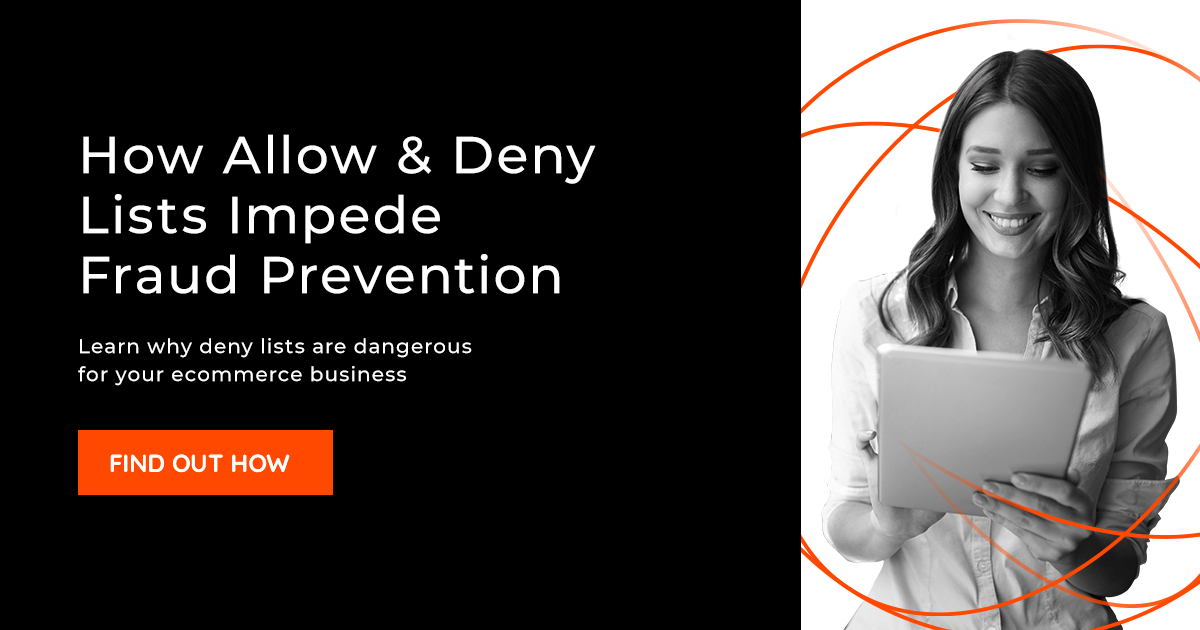The Risks and Issues Associated With Chargeback Blacklists and Whitelists
Chargebacks are a costly – yet inevitable – part of doing business, especially when you have an online store. As an e-commerce merchant, it’s important that you find ways to reduce credit card fraud, which reduces chargebacks in the process.
There are many ways to do this, but two of the most common are chargeback blacklists and whitelists.
What is a "Blacklist", and What Are the Risks?
When your business is hit with a chargeback, all the transaction details are added to a blacklist. Blacklists contain information such as credit card details, email addresses, IP addresses and physical addresses. The next time an order is placed from the same IP address or uses the same email, the transaction is automatically declined.
In the 2015 Global Fraud Survey published by the Merchant Risk Council, blacklists were cited as one of the most commonly used tools by e-commerce merchants to prevent fraud. Specifically, 82% of the merchants surveyed reported using internal blacklists to manage fraud and chargebacks. Another 6% planned to start using blacklists within the next year.
The Problem With "Blacklists"
While blacklists may seem like a great way to prevent future fraudulent transactions and streamline internal operations, they are a misguided way to address chargebacks.
By using blacklists, you not only block fraudsters but also good customers with legitimate orders. Moreover, there are some basic methods a fraudster can use to fool blacklists and bypass the system.
Additionally, some of the transactions online merchants decline are in fact legitimate orders and are falsely declined.
For example, some physical or IP addresses serve a wide variety of people. Just because a person associated with a specific location defrauded your company doesn’t mean you should subsequently block all customers living in or shipping to that location.
The same thing happens with payment information. Sometimes, you have a fraudster or the legitimate person trying to use the same payment or address information. It’s not fair to block a legitimate customer trying to buy from you just because a fraudster stole their information.
Additionally, fraudsters constantly change the details they use when placing orders online. They open new email accounts, attempt to pay with a variety of stolen credit cards, employ proxy servers and enter the shipping addresses of different common locations. As a result, your blacklist may result in good customers being wrongfully rejected while fraudsters find a way to beat it.
What is a "Whitelist", and Is It Effective?
A chargeback whitelist is similar to a blacklist except the practice is reversed. Rather than ban certain people, a whitelist blocks everyone and only allows certain people through. For example, you can ban everyone except customers in North America or customers in low-fraud risk countries such as Denmark, New Zealand, Finland, Norway and Switzerland.
The biggest issue with whitelists is when fraudsters use data that’s included in the whitelist, such as with account phishing. By doing this, they use approved information to make fraudulent transactions.
Chargeback "Blacklists" and "Whitelists" Aren’t the Most Effective Tools
Accurately detecting and identifying credit card fraud is extremely complex. And while blacklists and whitelists seem like effective ways to prevent fraudulent transactions and increase your business’ profits, neither is foolproof and it often causes you to reject legitimate transactions while approving fraudulent ones.
Instead, you’re better off implementing a fraud protection solution such as ClearSale.
WE ARE THE ONLY SOLUTION IN THE MARKET THAT DON’T REJECT ORDERS AUTOMATICALLY.
Talk with a credit card fraud analyst today to learn how our multilayered approach can help you increase approval rates, protect against chargebacks and prevent credit card fraud.
 Sarah Elizabeth
Sarah Elizabeth
